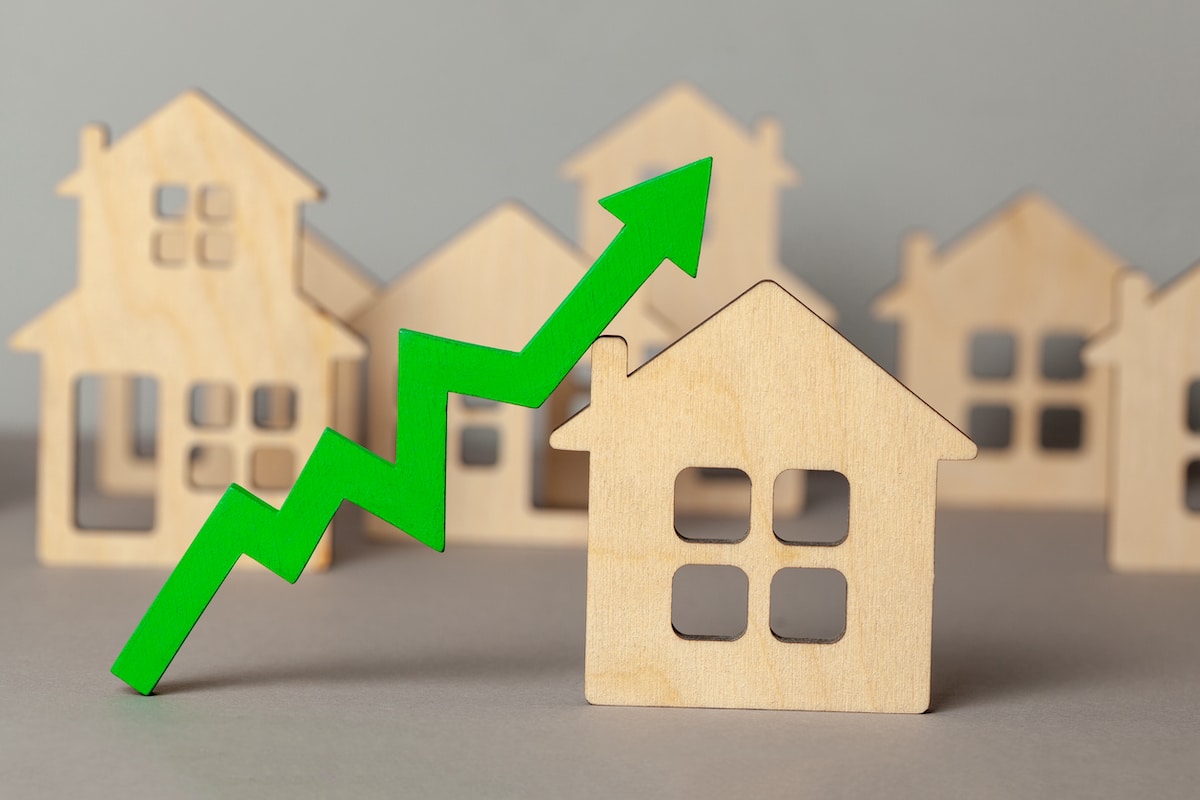This great piece about the US housing market growth has been published by Tim Thomas. We have permission to republish it here
When it comes to predicting the US housing market, few could claim they understand what’s happening better than Zillow, one of the most popular real estate listings services in the US.
If you’re hoping to buy a house any time soon, there’s a mixture of good and bad news — the good news is that Zillow has downgraded its predictions from April 2022, but the bad news is that it’s still expecting double-digit price growth over the next year.
Let’s take a closer look.
Zillow’s Predictions for the US Housing Market
Zillow carries out a market research report every month, which focuses on predicting trends within the real estate market over the next year. Its latest piece projects 11.6% growth in home prices between May 2022 and April 2023.
While that might sound like a lot, it’s a lot lower than Zillow’s previous report, which forecasted a massive 14.9% growth over the next year. Plus, both projections are significantly below the price growth of almost 20% we experienced in 2021.
The report also outlined expectations for 5.73 million existing-home sales over the coming year, representing a drop of 6.4% compared to 2021.
This is also a slight downgrade compared to the April 2022 report, which expected 6.09 million existing home sales.
Yet put into historical context, these numbers are solid. According to Zillow’s Home Value Index — which has analyzed annual price growth in properties since 2000 — an 11.6% growth rate has only been observed since 2020 and during a similar run in 2005.
The graph below shows just how extraordinary recent trends have been. Plus, Zillow forecasts for house sales are the second-highest since 2006.
Why Price Growth is Slowing (But Not Stopping)
There are two phenomena to analyze here: Why price growth is slowing compared to 2021, and why it’s still growing at all with such poor market conditions. Let’s answer both.
Why Price Growth is Slowing
A major factor in slowing price growth is the Federal funds rate increase, which rose in May 2022 to 0.75%.
This has made it more expensive to get a mortgage, contributing to lower demand for housing — especially when combined with increasing costs of living due to inflation and wages that are failing to keep up.
Mortgages are more out of reach than ever for first-time buyers and, the share of house sales going to first-time buyers dropped to below 30%.
Meanwhile, inventory has been gradually rising. One of the reasons house prices rose so high in the first place was tight market conditions and fierce competition between buyers.
Although we’re likely to remain in a “seller’s market” for the rest of the year (meaning sellers can dictate prices rather than buyers), inventory is now starting to increase in most parts of the US.
We’ve already seen the impact of both of these factors — fewer mortgage applications are being made, and there have been fewer cases where at least two buyers made offers for the same properties.
Why Growth is Continuing
Given that just about even other market is on the decline right now (just look at tech stocks and cryptocurrencies), none of this should come as a shock. What might be more surprising is the fact that, even if growth is slower, it’s still continuing.
Although inventory is rising, it’s not growing fast enough to take us into a buyer’s market, where sellers compete for a limited pool of buyers.
And even if first-time buyers might find it tough to enter the market, there are plenty of people looking for real estate investments or second homes, which are helping to keep demand up.
Will Growth Continue?
A crash might not be forecast for the next 12 months, but are we currently just in the calm before the storm?
Given that the only time in recent history we’ve seen similar numbers for house price growth was back in 2006, just before the financial crisis, it’s only natural to wonder if we could be returning to a pre-crash environment.
Yet most of the evidence suggests this isn’t the case. The crash in 2007 was the culmination of a few unique factors.
One was the fast growth in debt. This isn’t something we’re seeing right now — although US household debt is almost $16 trillion, the New York Fed has said borrowers are in “very good shape” overall.
There are also fewer subprime loans than in 2006 and more super-prime loans, and many people managed to save money during the pandemic and the past period of economic growth.
While not everyone has been so fortunate, homeowners aren’t in trouble as a whole.
Another influence was the sudden increase in housing supply. While supply is beginning to improve now, market conditions are still tight overall, and they’re only increasing at a slow, steady rate — not like the sudden increases we saw in 2006.
What Other Analysts are Saying
Zillow isn’t exactly a lone voice saying we’re likely to experience price growth for the next year.
For instance, a recent Reuters report predicted prices would increase by 10.3% over 2022, followed by a 5% rise in 2023 and an increase of 4.1% in 2024.
Although there are a few reports suggesting a painful crash is coming, the general consensus is that the most pessimistic outcome would a slight fall in housing market prices and then market stabilization rather than a crash.
Keep Your Wits About You
Zillow isn’t out of its mind for forecasting 11.6% growth in housing prices over the next year.
As crazy as it might seem when you observe the wider market trends going on right now, the continued demand, relative lack of housing inventory, and strong financial positions of homeowners will ensure prices can sustain themselves — at least for the foreseeable future.
Whether that’s good or bad news will depend on you, but the takeaway is not to do anything crazy.
More Articles From Wealthy Living Partners
- Planning for Paradise: 25 Things to do in Hawaii
- Essential Things You Should Know About Biden’s First Time Home Buyer Grant Program
- Warning Signs a Big Housing Market Crash is Just Around the Corner
- Dividend Kings Stocks That You Should Add to Your Watchlist Right Now
Disclosure: The author is not a licensed or registered investment adviser or broker/dealer. They are not providing you with individual investment advice. Please consult with a licensed investment professional before you invest your money.
Learn how to diversify and hedge your long-only stock portfolio. We’ve partnered with Tim Thomas to give you the opportunity to sign up for a free insight into the Swing Trading 101 program. The program has been developed over thousands of hours of trading over hundreds of thousands of dollars across stock, commodities, options, and cryptocurrencies. It’s designed to empower you to take a unique but strategic approach to the markets. Learn more about swing trading.
Tim Thomas has investments in real estate.
This post was produced by Tim Thomas / Timothy Thomas Limited and syndicated by Wealthy Living.
Featured image credit: Shutterstock.





